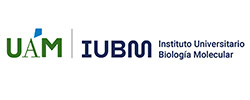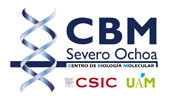SsDNA Virus Evolution, Pathogenesis and anti-cancer potential
Prof. José Mª Almendral del Río. Catedrático. Departamento de Biología Molecular. UAM.
Prof. Alberto López-Bueno. Profesor Titular. Departamento de Biología Molecular. UAM.
We have focused our research over the last two years in reliably testing the anti-cancer capacity of the Minute Virus of Mice (MVM), a member of the Parvoviridae. In our recent report, we describe that human glioblastoma stem cells (GSCs), with patient-specific p53 mutants and p53-Ser15 phosphorylation, are selective targets for two MVM strains (p, i) that are non-pathogenic for humans. These MVM strains induced a DNA Damage Response (DDR) in GSCs growing as neurospheres and disrupted the architecture of GSC-derived brain tumors in orthotopic rodent models (see Figure 1A), showing promise for biosafe personalized therapy against human cancers with p53 deregulations.
Other major related issues being explored include attempting physical and chemotherapeutic treatments to overcome cellular innate responses of cancer cells against MVM infection, and targeting MVM infection to the tumour vasculature by engineering the MVM capsid with VEGF peptides. Further, major efforts are being dedicated to exploring evolutionary strategies to develop parvoviruses with improved anticancer properties by optimizing their cytotoxicity and replication capacity in human tumour cells. For this, we are exploring the phenotypic features of (i) naturally evolved MVM variants with distinct tropism and pathogenicity, (ii) chimeric viruses spontaneously emerging after coinfection with two MVM strains, and (iii) a collection of MVM mutants affected at the capsid domain recognizing sialic acid receptors that were obtained from directed evolution strategies.


